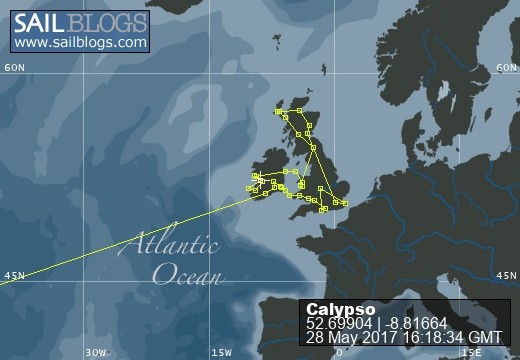
Log of Calypso
21 April 2024
13 February 2023
08 February 2023
08 February 2023
04 February 2023
06 August 2022
01 August 2022 | Stonehaven, Scotland
28 July 2022
26 July 2022
25 July 2022
22 July 2022 | Edinburgh, Scotland
21 July 2022 | Glasgow
19 July 2022 | Edinburgh Scotland
19 July 2022
10 July 2022
10 July 2022
25 June 2020
03 June 2019
03 May 2019 | Charleston, SC
01 May 2019 | Brunswick, Ga
The Final Frontier
02 May 2017 | Haltwhistle, England
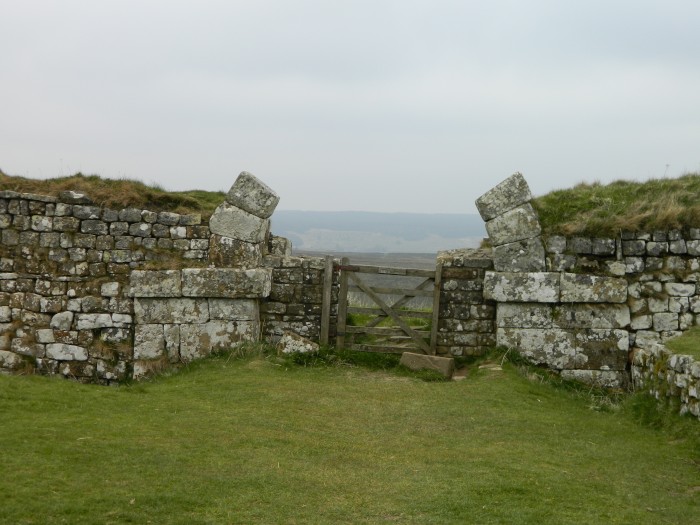
Our reason for coming to Haltwhistle was simple, it is the best location to get a better understanding of Hadrian's Wall. We scheduled a full day tour with our guide, Peter Carney, http://www.hadrianswall-walk.com and after nine hours with him, we had answers to many of our questions, and learned that some answers would be forever, lost to history.
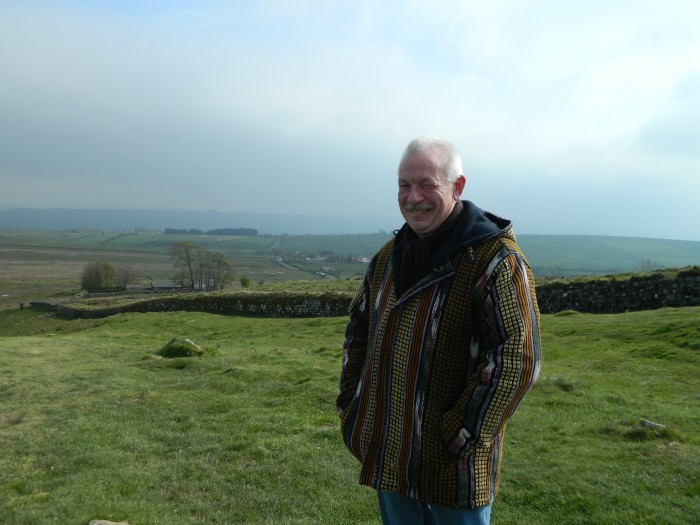
Peter picked us up at 0930, and we began to explore this World Heritage Site. The Romans had been in Britain as early as 55BC, when Julius Ceasar visited. But, it wasn't until 43AD that there is written evidence that the Roman Army invaded southern Britain.
These were turbulent times especially if you're the Emperor of Rome. The Empire was huge, but around 74AD, attention focused on Britain. As the army marched in from the southeast corner of the island, some of the indiginious tribes surrendered & some fought back and lost. Some, however, conducted guerrilla style warfare and with it came looting, burnt homes & crops, and the steeling of livestock.
This was a violation of The Pax Romana, which was supposed to provide protection to the newly conquered people of Britain.
As more & more solders arrived to protect the newest part of the empire, a road was built across the countryside, from what is modern day Carlisle to New Castle. Called, Stanegate, "stone road", this road allowed troops and supplies to move from east to west across Britain, or vice versa, as needed.
Peter drove us down a section of the Stangate, now with tarmac over most of the original Roman cobblestones. It's amazingly straight as an arrow! Built without levels, planes, graders, or survey equipment. It was the only road, in Britain, connecting east & west, until the mid-Seventeen Hundreds.
Around the time of Stangate's construction the first outpost was built at Vindolanda, http://www.vindolanda.com
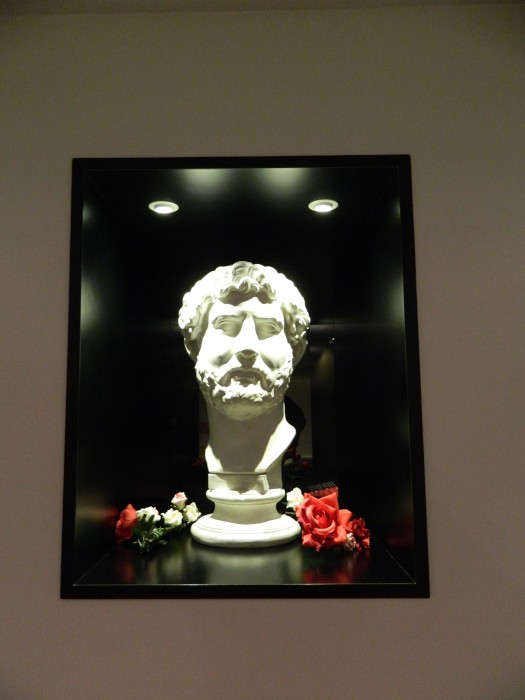
Later in history, 120AD, the newest emperor Hadrian an architect, designed a huge wall to be built to basically parallel, Stangate. This wall is known as Hadrian's Wall.
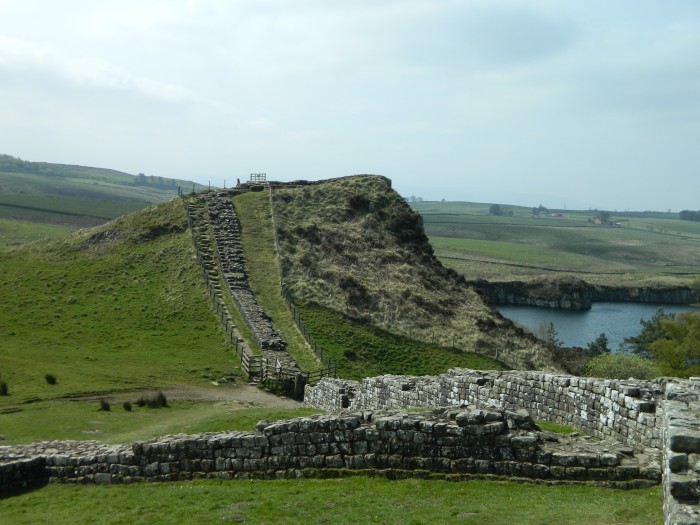
Since the real purpose for the Wall is still unknown, Peter gave us several popular theories. These include, the Wall was built to establish a check point for collecting customs taxes. Another, is to project an image of strength & power as a "look what we can do", deterrent. But deterrent for whom, they were the Roman Empire?
In northern Britain, present day Scotland, lived the Picts. These weren't farmers or sheep headers. They were a hard core tribe that roamed The Highlands killing & taking what they needed to survive and they were becoming a problem to the Romans. It is said they fought naked, painted blue! Not that we know thru any practical application but, if you are outside in The Highlands, and you are are naked, you most likely don't need to "paint" yourself blue...;)
The 80 Roman mile, or 72 statute mile, long Hadrian's Wall took about 10 years to complete. Three Roman Legions (5000 men each) and auxiliaries were used. Each legion worked on different sections which they customized without altering Hadrian's Plan.
The number of auxiliary troops is unknown since they were non-citizens usually captured as the result of other military campaigns. But, they were paid and if they survived the 25 year term of service they received a pension that included a piece of land & they were granted citizenship. Once citizen, they also received the honor of becoming a taxpayer.

Hadrian designed the wall to be 10 feet wide & up to 20 feet high. Stone needed to be cut to fit which ruled out the volcanic igneous rock. Sandstone was the only alternative and had to be quarried, hauled, cut, placed, & mortared in place to construct the wall.
Every mile, along The Wall, a "Mile Castle" was built into the wall. These structures, which no one truly knows what they looked like, housed up to 16 soldiers each. They provided protection from attack & shelter from the winter cold.
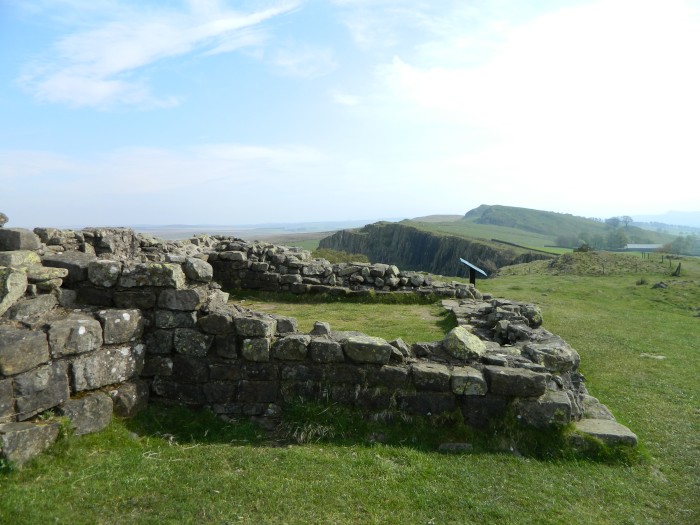
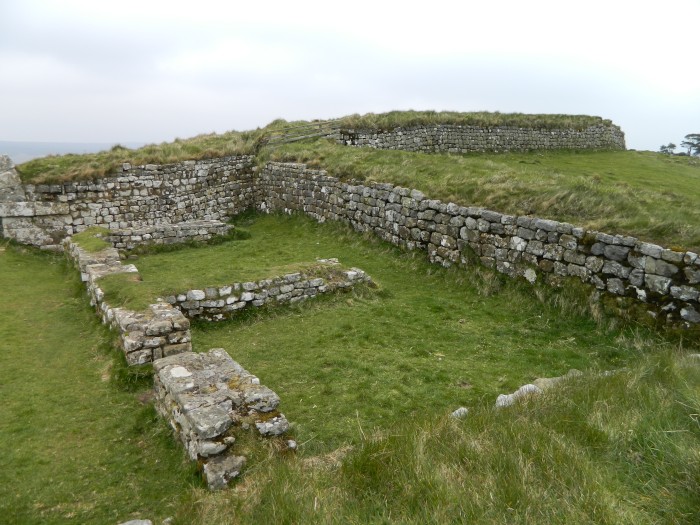
Additionally, in between each Mile Castle was a turret that served as an additional lookout tower. We toured Mile Castles 41 & 39 and looked out from the vantage point Roman soldiers would have had.
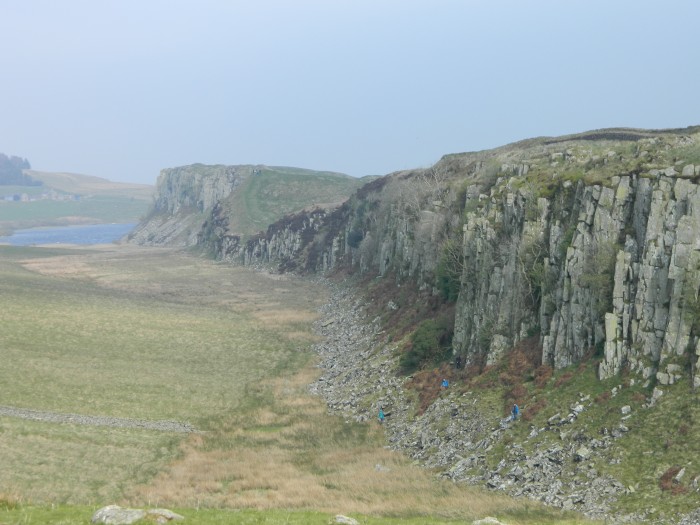
About three years into construction emperor Hadrian came to Britain to inspect the work. In areas like these on a cliff, which couldn't be easily attacked, he modified his plan making the walls only 6 feet thick. This saved construction time.
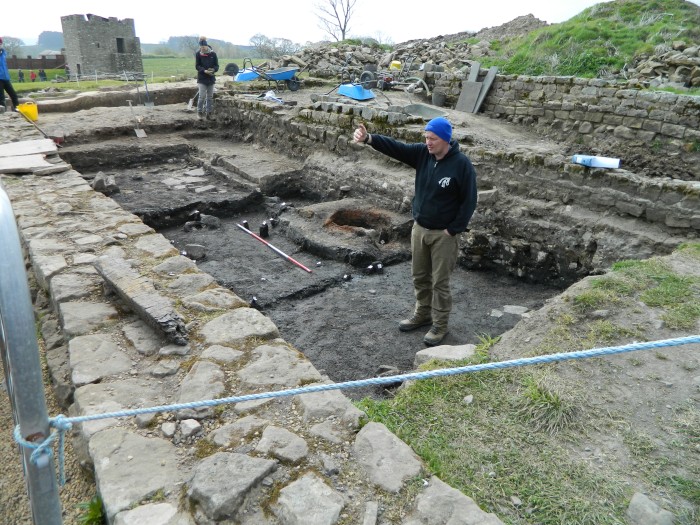
Over the years at Vindolanda, nine forts are built on the rubble of pervious forts. Two Thousand years later, this is great news for people like Andrew Birley, Director of Excavations for The Vindolanda Trust.
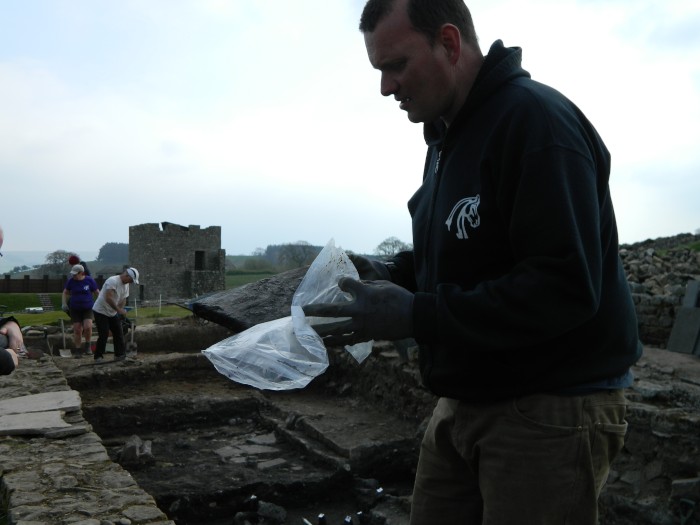
In a couple of hours at the site we saw his team discover part a wooden timber, piece of a bucket, part of a goat skin tent, with a tie down hole, and a bronze coin, in mint condition. As long as we didn't photograph the coin, we were given permission to hold the bright shiny bronze, coin about the size & weight of a silver dollar. It still had the mud it was found in, covering it. Ok, coolest thing of the day!
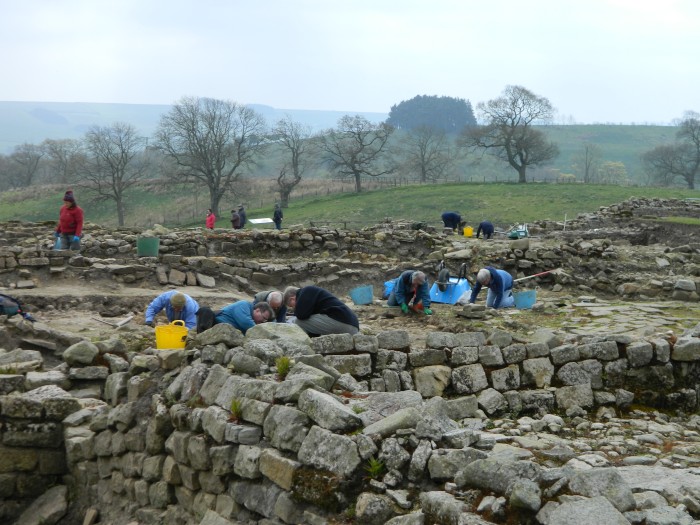
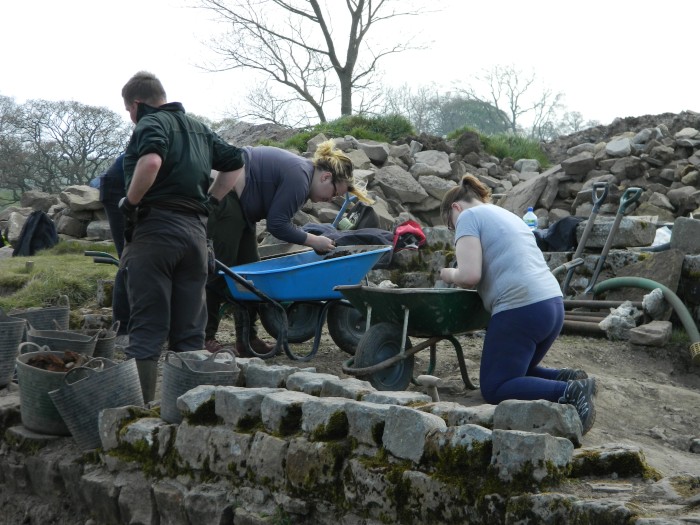
Closed off from oxygen, artifacts are recovered daily using volunteers. These willing workers sift through mud & muck looking for small objects from 2000 years ago. Only a few hundred volunteer spots are available each year, which has developed a fearsome competition were volunteers pay £150 for the privilege of working the site for one week.
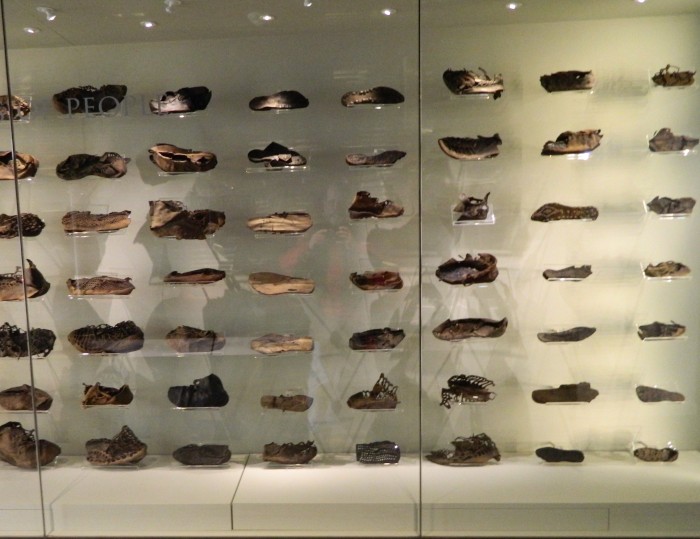
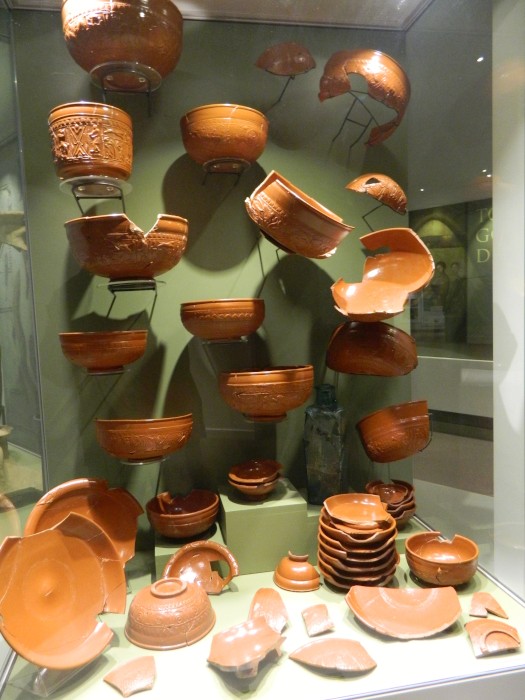
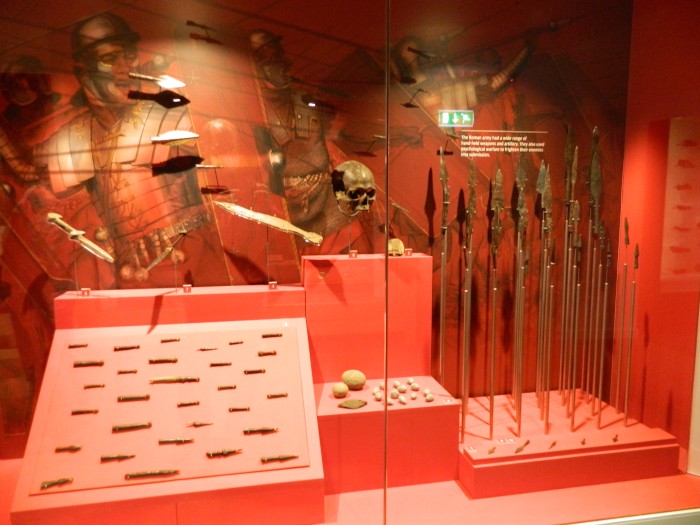
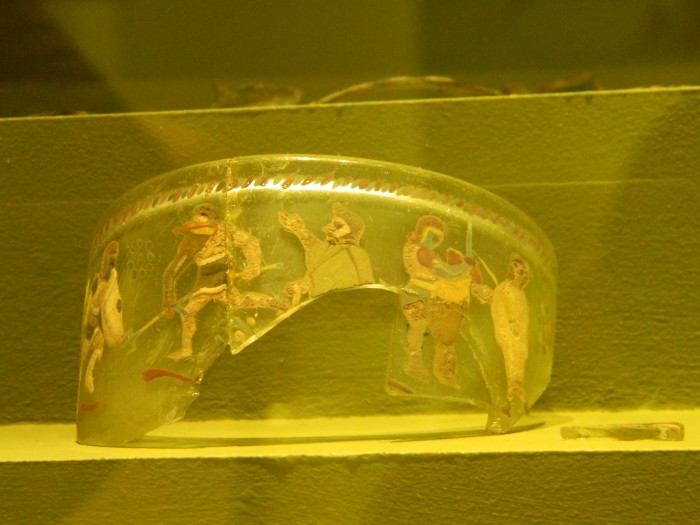
Shoes, pottery, weapons, and rare, hand painted, clear glass has been found and only a small portion is displayed in the Museum.
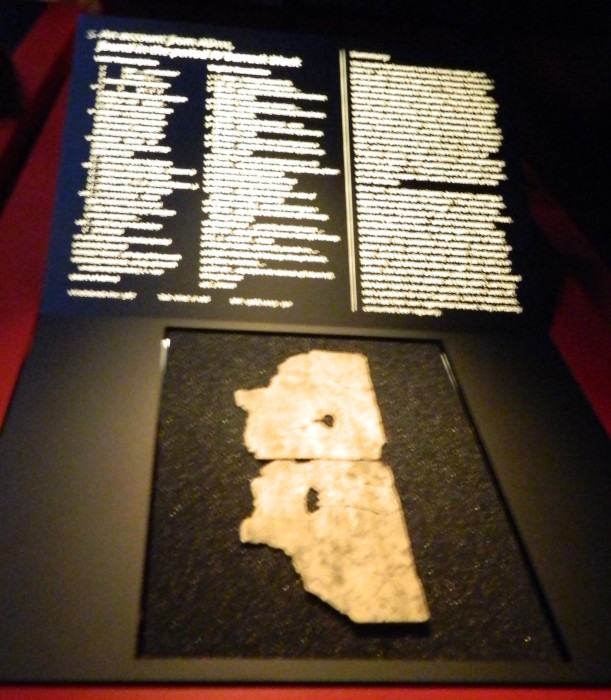
The rarest items are not coins but Writing Tables. Every Roman was required to be literate. Since paper was so expensive, wood was used to write everything from invitations for a Birthday party, to the soldiers duty assignments. The 752 writing tablets recovered & deciphered give real insight into the daily life of a Roman soldier & their family.

On every every episode of Star Trek, Captain Kirk would use the famous line, "Space, the Final Frontier..." But thousands of years before a Gene Rodenbury was born a Roman legionnaire, was standing duty at Mile Castle 39, probably looked at the Highlands and thought, "I'm at the final frontier"!
Fair Winds and Quiet Anchorages,
Wendy & Jeff

Peter picked us up at 0930, and we began to explore this World Heritage Site. The Romans had been in Britain as early as 55BC, when Julius Ceasar visited. But, it wasn't until 43AD that there is written evidence that the Roman Army invaded southern Britain.
These were turbulent times especially if you're the Emperor of Rome. The Empire was huge, but around 74AD, attention focused on Britain. As the army marched in from the southeast corner of the island, some of the indiginious tribes surrendered & some fought back and lost. Some, however, conducted guerrilla style warfare and with it came looting, burnt homes & crops, and the steeling of livestock.
This was a violation of The Pax Romana, which was supposed to provide protection to the newly conquered people of Britain.
As more & more solders arrived to protect the newest part of the empire, a road was built across the countryside, from what is modern day Carlisle to New Castle. Called, Stanegate, "stone road", this road allowed troops and supplies to move from east to west across Britain, or vice versa, as needed.
Peter drove us down a section of the Stangate, now with tarmac over most of the original Roman cobblestones. It's amazingly straight as an arrow! Built without levels, planes, graders, or survey equipment. It was the only road, in Britain, connecting east & west, until the mid-Seventeen Hundreds.
Around the time of Stangate's construction the first outpost was built at Vindolanda, http://www.vindolanda.com

Later in history, 120AD, the newest emperor Hadrian an architect, designed a huge wall to be built to basically parallel, Stangate. This wall is known as Hadrian's Wall.

Since the real purpose for the Wall is still unknown, Peter gave us several popular theories. These include, the Wall was built to establish a check point for collecting customs taxes. Another, is to project an image of strength & power as a "look what we can do", deterrent. But deterrent for whom, they were the Roman Empire?
In northern Britain, present day Scotland, lived the Picts. These weren't farmers or sheep headers. They were a hard core tribe that roamed The Highlands killing & taking what they needed to survive and they were becoming a problem to the Romans. It is said they fought naked, painted blue! Not that we know thru any practical application but, if you are outside in The Highlands, and you are are naked, you most likely don't need to "paint" yourself blue...;)
The 80 Roman mile, or 72 statute mile, long Hadrian's Wall took about 10 years to complete. Three Roman Legions (5000 men each) and auxiliaries were used. Each legion worked on different sections which they customized without altering Hadrian's Plan.
The number of auxiliary troops is unknown since they were non-citizens usually captured as the result of other military campaigns. But, they were paid and if they survived the 25 year term of service they received a pension that included a piece of land & they were granted citizenship. Once citizen, they also received the honor of becoming a taxpayer.

Hadrian designed the wall to be 10 feet wide & up to 20 feet high. Stone needed to be cut to fit which ruled out the volcanic igneous rock. Sandstone was the only alternative and had to be quarried, hauled, cut, placed, & mortared in place to construct the wall.
Every mile, along The Wall, a "Mile Castle" was built into the wall. These structures, which no one truly knows what they looked like, housed up to 16 soldiers each. They provided protection from attack & shelter from the winter cold.


Additionally, in between each Mile Castle was a turret that served as an additional lookout tower. We toured Mile Castles 41 & 39 and looked out from the vantage point Roman soldiers would have had.

About three years into construction emperor Hadrian came to Britain to inspect the work. In areas like these on a cliff, which couldn't be easily attacked, he modified his plan making the walls only 6 feet thick. This saved construction time.

Over the years at Vindolanda, nine forts are built on the rubble of pervious forts. Two Thousand years later, this is great news for people like Andrew Birley, Director of Excavations for The Vindolanda Trust.

In a couple of hours at the site we saw his team discover part a wooden timber, piece of a bucket, part of a goat skin tent, with a tie down hole, and a bronze coin, in mint condition. As long as we didn't photograph the coin, we were given permission to hold the bright shiny bronze, coin about the size & weight of a silver dollar. It still had the mud it was found in, covering it. Ok, coolest thing of the day!


Closed off from oxygen, artifacts are recovered daily using volunteers. These willing workers sift through mud & muck looking for small objects from 2000 years ago. Only a few hundred volunteer spots are available each year, which has developed a fearsome competition were volunteers pay £150 for the privilege of working the site for one week.




Shoes, pottery, weapons, and rare, hand painted, clear glass has been found and only a small portion is displayed in the Museum.

The rarest items are not coins but Writing Tables. Every Roman was required to be literate. Since paper was so expensive, wood was used to write everything from invitations for a Birthday party, to the soldiers duty assignments. The 752 writing tablets recovered & deciphered give real insight into the daily life of a Roman soldier & their family.

On every every episode of Star Trek, Captain Kirk would use the famous line, "Space, the Final Frontier..." But thousands of years before a Gene Rodenbury was born a Roman legionnaire, was standing duty at Mile Castle 39, probably looked at the Highlands and thought, "I'm at the final frontier"!
Fair Winds and Quiet Anchorages,
Wendy & Jeff
| Vessel Name: | Ex-Calypso |
| Hailing Port: | Morehead City, NC |
| Social: |
Port: Morehead City, NC


